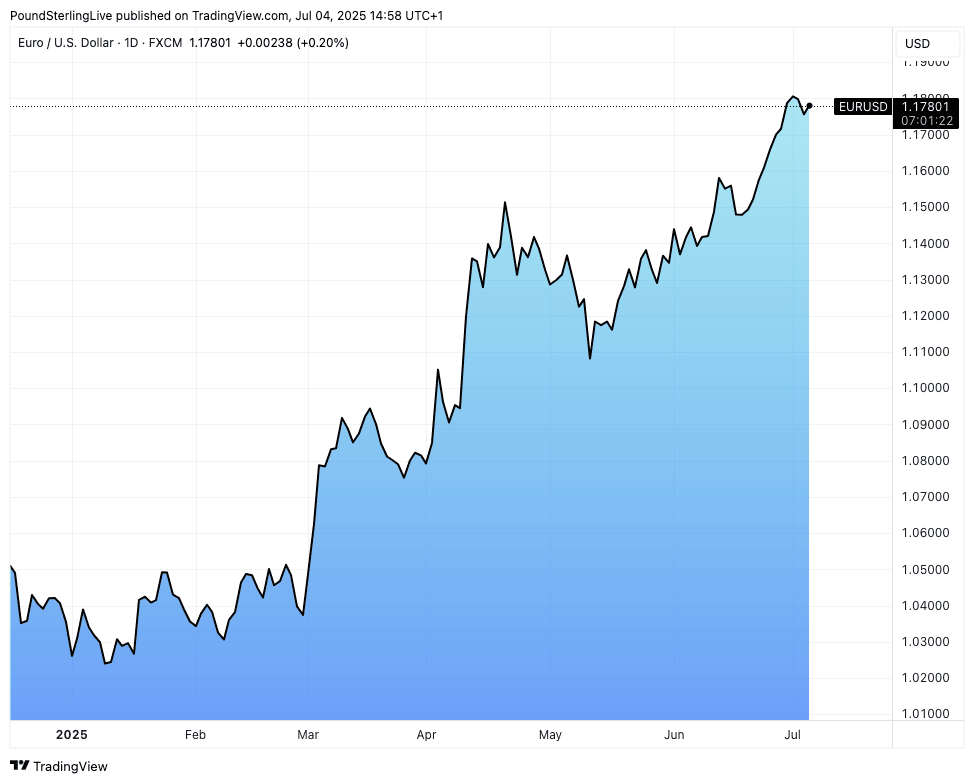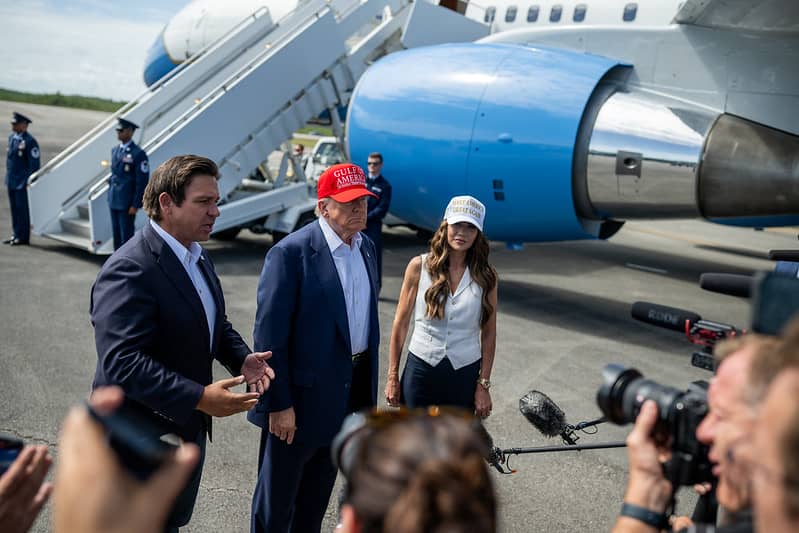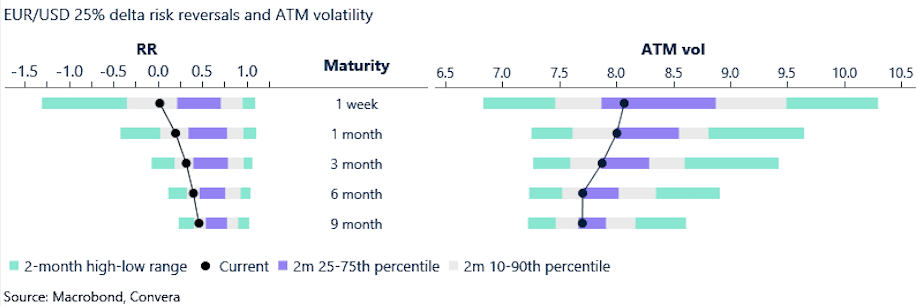Euro-Dollar Rate's 1.20 Target Looking More Distant
- Written by: Gary Howes

Image © European Central Bank.
Analysts at Convera think the Euro's advance faces a reckoning.
The rapid ascent in the Euro to Dollar exchange rate (EUR/USD) is "at its core, quite fragile" warns a new analysis from a leading FX market specialist.
Convera, the international payments business, says the Euro's role in the rally is of "little of substance" and instead "the surge has so far leaned heavily on a steady stream of U.S. dollar pessimism."
However, that pessimism is being increasingly questioned, with fresh bets on euro upside being scaled back over the past 24 hours, helped in no small part by the stronger-than-expected U.S. job report released Thursday.
Convera observes that the one-week risk reversals, which are used to gauge directional bias, were scaled back to 0 in the wake of the report that suggests the U.S. economy has not taken a material hit under Trump's second coming.
Bullishness on Euro-Dollar upside also slipped across the longer-term timeframes, suggesting less conviction in the rally relative to the past two months.
According to Antonio Ruggiero, FX & Macro Strategist at Convera, sentiment and economic fundamentals might be starting to shift in favour of the Dollar, which would leave the Euro exposed:
Can Euro-to-Dollar Hit 1.20?
The 1.20 level is something of a big number in FX right now, with the high powers at the European Central Bank (ECB) even discussing it as some kind of 'line in the sand'.
This talk alone puts it in the cross-hairs for many a trader. Institutional analysts also see it as an important benchmark when constructing their highly influential forecasts.
"We expect President Trump’s erratic policymaking is set to increase the number of 'Sell America' days," wrote Mansoor Mohi-uddin, Chief Economist at the Bank of Singapore. "That keeps us cautious on long-term Treasuries and the U.S. dollar."
But Ruggiero thinks the 'Sell America' trade might have had its day before 1.20 is achieved.

Above: The EUR/USD uptrend is strong, and betting against it is costly for the contrarian.
"The 'Sell-America' trade and 'euro-as-the-new-dollar' narrative flooded headlines (though they’ve quieted recently) after Trump unleashed his unpredictable trade agenda. High tariffs, paired with deep uncertainty around implementation, rattled markets and undermined anything stamped America-made," he explains.
A crux of 'Sell America' is that tariffs would result in a surge in inflation, which would hurt consumers and businesses alike, while denying the Federal Reserve the chance to cut interest rates.
But, Ruggiero notes, "inflationary impact of tariffs failed to materialise."
"And sentiment?" queries Ruggiero. "That too may be starting to shift. Trade talks are progressing, deals are getting done, and that July 9th deadline is starting to feel 'softer' than many had anticipated."
President Donald Trump will start sending letters to various countries today, telling them what their tariffs will be.
Other countries, lucky enough to have a place at the negotiating table, will likely settle some preliminary deals before July 09.

President Trump speaks to reporters. Official White House Photo by Daniel Torok.
This all means that the incredible tariff uncertainty that we saw in the early stages of this year is rapidly evaporating as resolutions are reached.
And that can only be good for the Dollar.
Interest rate expectations are also now moving in a distinctly supportive direction for the Dollar.
A recent run of strong data, topped off by Thursday's above-consensus U.S. labour market headlines, has put talk of a July cut to bed.
A robust economy and fading rate cut bets are traditionally and unquestionably supportive of the Dollar.
"So, that $1.20 target for the euro—just how achievable, or even sustainable, is it, despite what many analysts suggest?" asks Ruggiero.





